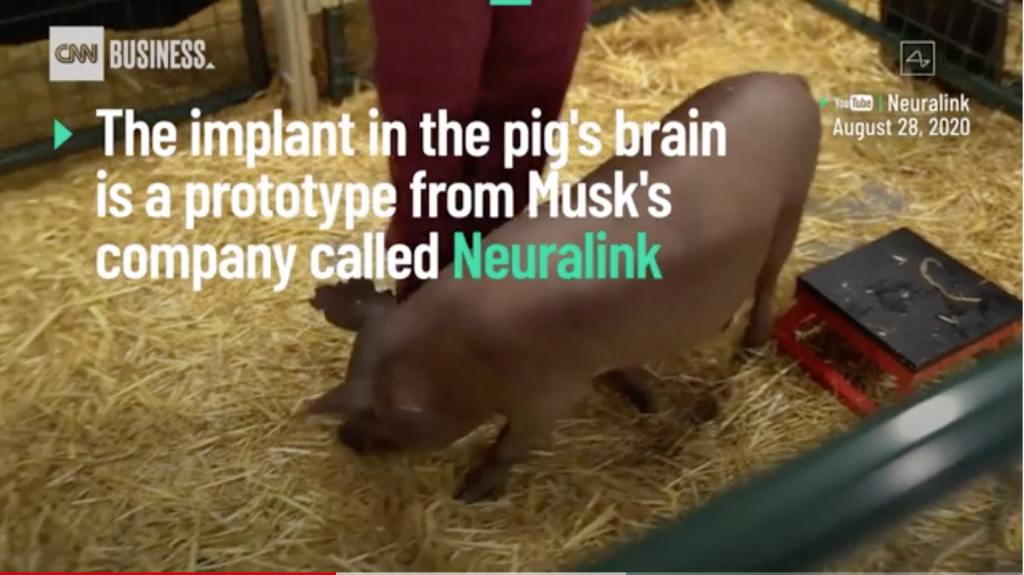
Gertrude the pig is sending signals to a computer through her brain implant from Neuralink. (Source: CNN Business)
Neuralink Experiments on Implant in Pig’s Brain with Robotic Surgery
The advances for brain implants are nothing short of amazing. Writer Kyle Wiggers takes on the latest Neuralink developments using pigs, robots and AI together to further the new technology.
Scientists at Elon Musk-backed Neuralink gave a progress update during a conference streamed online from the company’s headquarters in Fremont, California. This came just over a year after Neuralink, which was founded in 2016 with the goal of creating brain-machine interfaces, revealed its vision, software, and implantable hardware platform. Neuralink is moving toward its goals in spite of the pandemic.
Now, about the porcine assistants. You can watch them in action by clicking on the cnn.com link.
“Readings from a pig’s brain were shown onscreen in a live demo. When the pig touched an object with its snout, neurons captured by Neuralink’s technology (which had been embedded in the pig’s brain two months prior) fired in a visualization on a television monitor. That isn’t novel in and of itself — Kernel and Paradromics are among the many outfits developing brain-reading neural chips — but Neuralink uniquely leverages flexible cellophane-like conductive wires inserted into tissue using a “sewing machine” surgical robot. Musk says Neuralink received a Breakthrough Device designation in July and is working with the U.S. Food and Drug Administration (FDA) on a future clinical trial for people with quadriplegia.”
Neuralink founding team members Tim Hanson and Philip Sabes, both from the University of California, San Francisco, pioneered the technology with the University of California, Berkeley professor Michel Maharbiz. Musk calls the version demonstrated “V2,” an improvement over last year’s model. He believes it will be possible to embed it within a human brain in under an hour without using general anesthesia. He also says it will be easy to remove and leave no lasting damage, should a patient wish to upgrade or discard the interface.
V2
Neuralink collaborated with Woke Studios, a creative design consultancy based in San Francisco, to design the plastic casing (but not the technical components) of the robot sewing machine.
“The design process was a close collaboration between our design team at Woke Studios, the technologists at Neuralink, and prestigious surgical consultants who could advise on the procedure itself,” Woke head designer Afshin Mehin told VentureBeat via email. “Our role specifically was to take the existing technology that can perform the procedure and hold that against the advice from our medical advisors, as well as medical standards for this type of equipment, in order to create a nonintimidating robot that could perform the brain implantation.”
Wiggers describes how the operation is done, who is involved, including robots, and what they expect the process to do for people with debilitating diseases. But it has to be approved by the FDA first. It’s a fascinating read on what is surely the next giant step in medicine involving AI.
read more at venturebeat.com







Leave A Comment